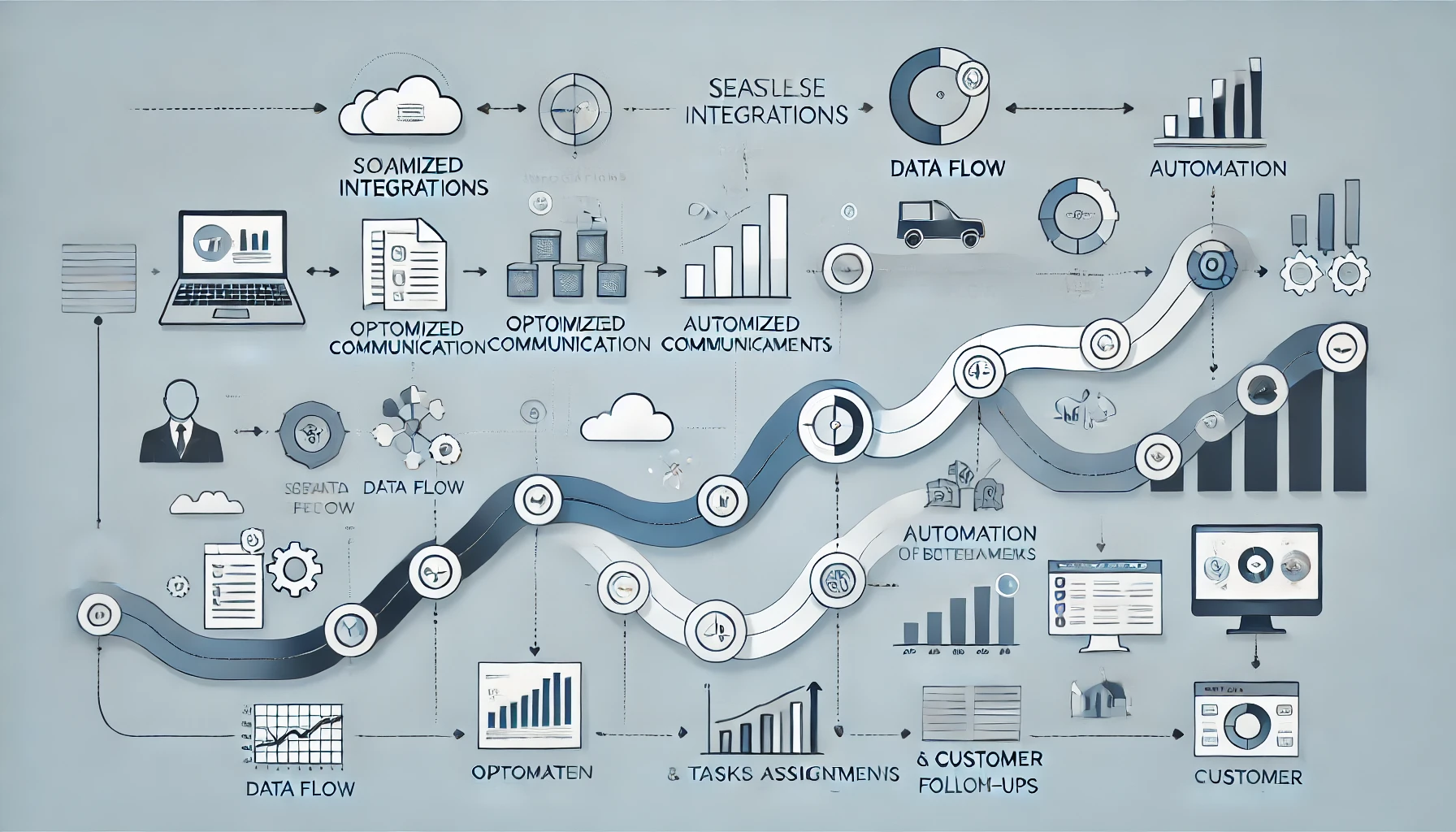

Identify repetitive, manual processes that consume significant time and resources.
Collaborate with stakeholders to understand the business’s key pain points and automation goals.
Assess the existing tools and systems in place to determine integration opportunities.
Deploy the automated workflows by integrating them with existing tools and systems.
Ensure seamless data flow between different departments and platforms.
Test the workflow to ensure it functions correctly and meets the defined objectives.
Map out the current workflows to identify inefficiencies and bottlenecks.
Design an optimized, automated workflow that eliminates manual tasks.
Determine the appropriate tools and technology for each part of the automation process
Provide training to employees on how to use the new automated workflows effectively.
Ensure teams understand how automation will improve their day-to-day operations and how they can leverage the tools for maximum productivity.
Choose the right automation platforms based on business needs.
Customize automation workflows to ensure they align with specific business requirements.
Set up triggers, actions, and conditions that define how data and tasks flow between systems
Continuously monitor the performance of the automated workflows.
Analyze key metrics like time saved, error reduction, and cost savings.
Make adjustments and optimizations as needed to improve efficiency and address any issues that arise.
Most repetitive and manual processes can be automated, including data entry, customer follow-ups, reporting, task assignments, inventory management, and appointment scheduling. We work with you to identify the best areas for automation based on your business needs.
Absolutely! Workflow automation is beneficial for businesses of all sizes. Small businesses, in particular, can gain significant efficiencies by automating tasks that would otherwise take up valuable time, allowing them to scale faster with fewer resources.
We conduct a thorough analysis of your existing systems and processes during the discovery phase. Based on that, we create custom workflows using tools like Zapier, Make, or APIs to ensure seamless integration with your current platforms without disrupting your operations.
We leverage a range of leading automation tools, including Zapier, Make, and custom-built APIs. These platforms allow us to integrate multiple apps and systems to create seamless automated workflows tailored to your business.
Yes, all automation solutions are fully customizable. We tailor workflows to your specific requirements, ensuring that they align with your business goals and improve your existing processes without disruption.
We provide ongoing support, monitoring, and optimization services to ensure your automated workflows continue to perform effectively. As your business grows or processes change, we adjust the automation to meet evolving needs and provide troubleshooting if issues arise.
Reach out today to arrange a consultation and experience the impact of our expertise firsthand.
